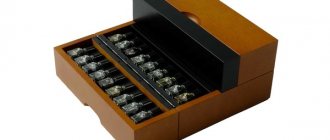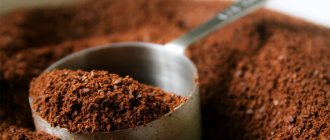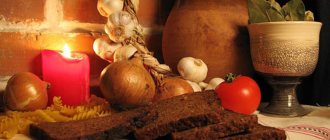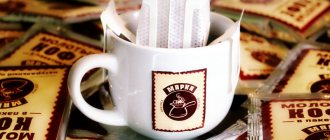The longer the experience of drinking coffee, the higher the requirements for its taste characteristics. And now it’s becoming increasingly difficult to find the right roast that perfectly matches your desires. So many coffee lovers are learning to roast their own beans. A natural question arises - what to fry in? A coffee roaster provides the most complete answer. Let's take a closer look at this device, industrial versions of which have long been installed in coffee factories.
Why roast beans at home?
Coffee that has been roasted in advance can be delicious. However, even the best coffee beans begin to lose their rich taste and aroma a short time after roasting. If you want to make real coffee at home, it's time to get your own roaster. Then you can enjoy fresher and tastier coffee.
Don't want to read? You can't go wrong with a Nesco roaster.
It is easy to use and can roast large quantities of beans.
Gas roasters
A gas device saves money - it is cheaper than an electric one. A high-quality burner, according to experts, will last up to 20 years. Gas models run on either natural gas, propane or butane.
What is the difficulty of working with a gas roaster: experience is required. Roasting occurs very quickly. First, the grains begin to warm up, and moisture is immediately released - it sharply reduces the overall temperature.
The first crack is a special moment in roasting, characterized by a sudden release of a large amount of moisture. Immediately the temperature of the grain decreases. The gas device works in such a way that it is difficult to achieve a gradual decrease in temperature.
When choosing a gas device, it is important to take the time to consider the presence of a double drum. Thanks to their unusual structure, the grains heat up more evenly - the temperature drops and rises smoothly.
The best coffee roasters
Thanks to us, you won't have to do fortune-telling using coffee grounds. We have selected several coffee roasters that have all the necessary functions. My pleasure.
Roaster for coffee beans Nesco CR-10-10-PR
If you have a lot of coffee lovers in your house who are eager to get their morning cuppa, then you're probably already into roasting yourself.
You can simplify things if you use this roaster. It can roast up to 142 g of coffee beans at a time. This will make enough for 36 cups of coffee - although this depends on how many beans you use for your coffee. After all, it could be one very large mug consumed before an office meeting on Monday at 8am. Nesco CR-10-10-PR has advanced odor and smoke elimination features, so you won't feel like you're in Firestorm while roasting. It is easy to load beans into the roasting chamber, and the menu controls are simple and intuitive. This machine is a great choice for those just getting into roasting or those taking it to the next level after previously popping beans in a popcorn maker or manual model.
Approximate cost: $137.00
Drum roaster Behmor Plus Customizable
You may have been at your local coffee shop and marveled at the drum roasters and the wonderful smell that came from the machines.
Of course, you can build such a machine yourself, and you can also bring home this neat and relatively small roaster from Behmor. This machine is the size of a small microwave. It is slightly larger than other, cheaper coffee roasters.
But you can roast up to 454 g of coffee beans at a time. If you make and drink many servings of coffee per week, then this model will save you time and effort. The device contains a smoke elimination system and also has five different roasting cycles. The roasting chamber is illuminated so you can observe the coffee beans.
Approximate cost: $399.00
Automatic roaster for coffee beans FreshRoast SR500
Are you short on kitchen space but still want to roast beans at home?
Set aside some space in your kitchen for the FreshRoast SR500. Despite its modest size, the device has many functions. For example, it has a fan whose speed can be adjusted, as well as three temperature settings.
This model allows you to roast 90 g of coffee at a time. That's 21 cups of coffee, so you can invite friends over without worrying about roasting extra coffee. Combined with uncomplicated operation and easy cleaning, you get a roaster that is ideal for small coffee brewing spaces.
Approximate cost: $189.00
Manual ceramic roaster for coffee beans Nuvo Eco
After a good coffee, just like after exercise, you feel energized.
Why not combine roasting coffee with a moderate-intensity workout? To make delicious roasted beans in the Nuvo Eco Ceramic Manual Roaster, you only need two things: fire and the desire to move around while roasting. Up to 70 g of beans are placed in this manual roaster at a time, and they are roasted over an open fire. Of course, such volumes will not be enough for a crowd, but you will have fun in the morning thanks to the movement and the unique appearance of the roster. If you like arts and crafts and make coffee for 1-2 people every day, then this model is for you.
Approximate cost: $30.00
Popcorn maker Presto PopLite
We know what you're thinking: "Do you want me to roast my coffee in this?"
Be strong. Although these devices are designed to make popcorn crisp, Presto PopLite popcorn makers will roast coffee beans just as well. In fact, popcorn makers have their fans, because you can make both popcorn and coffee in them. This method of roasting coffee beans requires more attention to detail and more care than with other machines. You will have to roast coffee outside the home, and the device will only fit no more than 90 g of beans at a time. However, this model has built-in ventilation and an automatic husk removal system. All this, as well as its relative affordability compared to professional roasters, make this model a good option for those who are on a budget or just getting started with coffee roasting.
Approximate cost: $18.23
Retro coffee roaster Hario
Good coffee is a kind of art.
If you want to feel like a master of your craft, you'll love carefully twisting this retro-style glass roaster while holding it over the fire of a spirit lamp and watching the beans roast. You can quietly hum Mumford & Sons songs while you do this - this is optional, but recommended. Only 50 g of beans will fit into this machine at a time. This Japanese coffee roaster emphasizes patience, artistry, and craftsmanship. With its unique design, this model can become the talk of the town. If you want every cup of coffee you make to be not just a drink, but an entire experience, then this model is for you.
Approximate cost: $239.46
Stainless steel Nesco 481825PR coffee roasting oven
With this device from Nesco, you can learn how to use a professional roaster that doesn't come at a professional price.
The power of this model is 1425 Watts and the capacity is 17 liters. She can roast a Thanksgiving turkey just as easily as she can roast coffee beans. The device can withstand high temperatures – up to 232°C. You can tinker with different roasting recipes as you please, trying to create the perfect cup of coffee. This machine is quite large and will take up a lot of space in the kitchen. With a mid-range price and powerful roasting settings, this model is a good choice if you frequently roast coffee in large batches and want quality to match quantity.
Approximate cost: $90.08
Great Northern Popcorn Stainless Steel Stovetop Popcorn Maker
Roast coffee like cowboys.
Well, or at least like your grandparents in the 50s. If you prefer to be hands-on in the process and want a feature-rich, high-capacity device, then you'll love roasting coffee beans in the stainless steel popcorn maker from Great Northern Popcorn. Thanks to the built-in stirring system, your beans will roast evenly. This small device is easy to clean and store, so you don't have to waste valuable kitchen space when it's not in use.
Approximate cost: $90.08
Popular models
Even though a coffee roaster is still a rather outlandish kitchen accessory, the modern market offers enough models for home use. Unlike factory ones or those used by professional baristas, they are easy to use. You just need to pour coffee beans inside, set the desired mode and wait, enjoying the pleasant aroma.
So, which models are most popular among coffee lovers?
Fresh roast plus 8
This roaster is ranked first on this list because it is the easiest to use. Green beans are poured into a glass flask, and the husks that form during the roasting process accumulate in the upper separator. The roasting of the beans itself is carried out by convection - in a stream of hot air. The whole process takes about 10 minutes, which is an advantage.
One of the downsides is the noise - the device is quite loud. However, the capacity is no more than 60 g, which is optimal for home use.
Nesco Coffee
Well designed model. Up to 120 g of coffee is loaded into it. Roasting occurs in the same way as in the previous model, in a glass flask with a stream of hot air. During the roasting process, the coffee is mixed with an auger.
This roaster is good for light to medium roasts. A strong degree can be achieved, but it will take more time. So lovers of strong drinks should think twice before purchasing this look. On average, roasting beans takes 15 minutes. 5 minutes are allotted for subsequent cooling.
Compared to other household roasters, most of which move quickly from the first to the second click, this one has a pronounced range - you can more accurately set the roasting time. There is a digital time indicator.
The catalytic converter works well in it, eliminating some of the smoke. Unlike other home models, this one produces significantly less smoke.
Behmor 1600
A very spacious model for home use - it can roast up to 500 g of coffee beans. The loading level is 100, 250 and 500 g. It is worth noting that the more grains are fried, the more smoke is released. Therefore, it is better not to load more than 100 g, otherwise additional exhaust hood will be required, since the built-in smoke absorber will not cope with everything.
This type belongs to the drum type of roasters. Its device includes halogen quartz heating elements. During operation it is very quiet when compared with other air-ceiling models. Therefore, it will be easy to hear the first and second clicks.
It has a bright display with a timer that counts down the frying and cooling time. There is a multi-programmable remote control for all loads, which can be used to control the roasting process. The functionality also includes automatic overheating protection and protection against programming errors.
The device is made of stainless steel, but is quite massive - it weighs 20 kg. This is a minus, on the one hand, but on the other, precisely because of its volume, this roaster copes well with uniform roasting of low or medium degrees. It is not suitable for deep frying.
When choosing a place for a roaster in the kitchen, you need to rely on the degree of its load - the larger it is, the closer it should be to the hood.
Benefits of home coffee roasting
All coffee lovers prefer to control the process of preparing their favorite drink in everything. We always need to achieve a high level of skill in this - and for this we can buy a semi-automatic espresso machine or meticulously improve in the pour-over method. But is it worth it to spare your time and effort and start roasting coffee beans yourself?
One of the benefits of roasting your own beans is that you can create your own coffee blends. This means that you can adjust the degree of roasting, select the country of origin of the beans, etc. You will be able to control everything, except, perhaps, the weather conditions in which the coffee was grown, and that’s cool.
You will also be able to control the degree of roasting. As you'll learn from this roast level guide, there are no exact standards in this area. If you roast your own coffee, you'll know exactly what you're getting. This is why you can achieve the perfect roast (with some practice).
Finally, it's just fun! We all like to have hobbies and take time for ourselves. Roasting coffee allows you to take time out for something you enjoy. It's worth it. (Needless to say, this relieves stress.)
Roster description
The design of the roaster in the classic version is a mini-oven with a door. The inner chamber of the cabinet is made of stainless steel or bioceramics, which indicates the durability of the structure. Some roasters are covered with enamel inside.
The main elements of a compact oven are:
- Heating elements that heat food;
- Tray racks attached to oven guides;
- Thermostat, time corrector and mode switch.
Additional equipment includes:
- Grill spit;
- Chicken stand;
- A set of baking trays of different shapes and purposes;
- Trays for liquids and crumbs;
- Fan.
Manufacturers of household appliances are pleased with the variety of external forms of roasters. The body of the mini-oven comes in the form of:
- Pyramids;
- Cone;
- Cylinder;
- Parallelepiped.
Whatever design the buyer chooses, the main thing is that the roaster fulfills its main purposes.
A little guide to coffee roast levels
To help you understand what to expect when roasting coffee beans, let’s look at the roast levels.
- Green: the grains will arrive to you in this form. This color will remain for some time at the beginning of the roast.
- Yellow: Green will give way to a more yellow hue. You will be able to notice a herbaceous aroma.
- Steam: Water will begin to evaporate from the beans and you will notice steam. Some roasters have a system that eliminates smoke and steam, but you will still be able to see it.
- First click: Once the steam starts to appear, you will hear clicks. This happens because the grains expand and the sugars go through a process of caramelization. After the first click, the beans will go from New York to Full New York roast. The color of the beans will be medium and the beans themselves should look dry.
- Second Click: You will hear a second, louder click as the beans roast. It serves as a signal that you are moving to darker degrees of roasting. You may notice oily marks on the surface of the beans. We do not recommend waiting long after the second click.
- Burnt beans: If roasting continues after the second click, the smoke will become more acrid and the surface of the beans will become oilier. The sugars will start to burn. If you continue, the roasting temperature may become dangerous and the beans will simply burn and taste unpalatable.
Professional advice
For beginners, we recommend frying until the first click. If you find that you need a darker roast, try to achieve it. If you continue to fry after the second click, you will find yourself in the French frying area. We do not recommend doing this, especially at home.
Even if you like French roast coffee, you should not roast your beans this way due to the high temperatures and large amounts of smoke. Pulling out the beans before the first click is also a bad idea. The Blonde roast isn't that great.
We recommend reaching medium roast levels. You can make the grains a little lighter or darker depending on personal preference. In any case, most people prefer medium roast levels, as this is where the full flavor of the coffee comes out.
What is a roster?
A modern invention in the form of a mini-oven designed for cooking is called a roaster. The multifunctional unit operates from the mains and is able to cope with tasks such as:
- Toasting and grilling;
- Bakery;
- Making toast for breakfast;
- Reheating prepared food;
- Defrosting food.
The mini-oven, thanks to its abilities, received the original name “Roaster”. The formation of the word comes from the English verb “to roast”.
Types of roasters
Popcorn makers
Obviously, popcorn makers are not technically designed for roasting coffee. However, they are often used for precisely this purpose.
Popcorn makers are not ideal, as the kernels are roasted somewhat unevenly. They are perfect for beginners. With a popcorn maker, you'll be able to figure out if you like toasting beans at all, without wasting too many beans.
If you decide to roast coffee beans at home, we recommend purchasing one of the roasters below to make your life easier.
Air roasters
Air roasters, like popcorn makers, use direct heat or convection. The principle of their operation is that hot air is passed through the frying chamber. As a result, the grains come into direct contact with heat.
Air roasters, like popcorn makers, are usually quite small. They are best suited for those who roast coffee in small batches. If you make coffee for one or want to stock up on beans of different roast levels for the week, then this type of roaster is for you.
Drum roasters
Drum roasters, on the other hand, use conduction, which means indirect contact with heat. Typically, these machines have a rotating roasting chamber. The heat does not contact the grains, but the walls of the chamber. Touching the heated surface, the grains begin to roast.
While air roasters are typically suitable for small portions, drum roasters have a larger capacity. However, we don't recommend roasting more beans than you need for the week. This type of roaster is good for you if your whole family drinks coffee or if you yourself drink several cups of coffee a day.
Types of roasters
Classification of roasters by type of construction:
- drum - devices with a drum that rotates around an axis lying in a horizontal plane. Approximately 50% of heating occurs due to convection, up to 30% due to conduction, and the rest due to radiation;
- convection roasters, where the grains are heated by a stream of hot air;
- Mixed type roasters are devices with a fixed drum. The grains are mixed by blades located inside it and rotating around a vertical axis.
Drum roasters are the most common. The capacity of industrial devices reaches several centners; small roasting companies purchase roasters with a capacity of 20–50 kg. Cafes install models designed for roasting 1–5, sometimes 5–10 kg.
Drum roster (example)
For home needs, they buy mini-roasters that can roast 60–300 g of beans in one go. When choosing a roaster, you need to consider that the maximum shelf life of roasted beans is 2 weeks.
Convection roasters roast coffee faster than drum roasters. But it is inconvenient to roast large volumes of grains in such devices.
In mixed-type devices, up to 70% of heating occurs due to convection. These devices have all the advantages of drum and convection roasters, but without their disadvantages.
Convection roaster (example)
Most models are heated by gas or electricity. But industrial coffee roasters can also be dielectric (roasting beans is carried out using microwave radiation, like in a microwave oven) and infrared.
Other factors to consider
How long do you fry?
As mentioned earlier, different roasters have different capacities. Before purchasing this device, pay attention to how much coffee you (and other people) consume per week. This time period is ideal as the beans will remain fresh.
Once you know your average coffee consumption, check your roasters' capacities and eliminate models that are too large or small. This will allow you to significantly narrow your search.
Is there a cooling function?
The cooling function is a must if you are serious about roasting coffee. If there is no such mechanism, the beans will continue to roast even after you turn off the heat because the internal temperature of the beans will remain high. This can cause the beans to roast unevenly or burn. This means that popcorn makers should not be used for a long time.
How dark a roast do you want?
When the beans reach a darker roast level, there will be a lot of smoke. Some cars have safety systems that can eliminate this problem, but smoke is virtually unavoidable. Unless the room you're roasting in has very good ventilation, DO NOT go to dark levels.
This could cause the fire safety system to go off and the neighbors to start panicking. In addition, it is simply unsafe to inhale smoke in large quantities. If you still like a dark roast, you should take this into account, buy something that will reduce the amount of smoke to a minimum and improve room ventilation.
Electric roasters
The operation of electrical devices is based on heating the heating element. The total period of work is up to 6 years. The beans in the devices are fried as evenly as possible - it is possible to lower and increase the temperature. The main problem: it is difficult to achieve a sharp increase in temperature.
Modern models are equipped with manual or semi-automatic control. Available profiles:
- French press;
- filter coffee maker;
- other roasting methods.
Home appliances are installed near the hood.
Rating of quality roasters for home in 2020
Mini oven Gefest PG 100
| Options | Characteristics |
| Type | Mini oven |
| Chamber volume | 19 l |
| Modes | Top grill Bottom heat Top heat |
| Control type | Mechanical |
| Thermostat | There is |
| Housing material | Metal |
| Maximum heating temperature | 270 °C |
| Minimum heating temperature | 130 °C |
| Number of burners | 2 |
Universal oven of compact size with the function of switching heating elements. The controls are predominantly mechanical. The roaster operates when gas fuel is supplied. The design of the upper part of the mini-oven consists of two gas burners. Suitable for cottages and small kitchens. Two versions of the mini-oven: white and coffee color. Cost of the roaster: 5,415 rubles.
Mini oven Gefest PG 100
Advantages:
- Universal mini-oven model;
- The roaster is easy to use.
Flaws:
- Works only on gas fuel.
Mini-oven Gemlux GL-OR-1538LUX
| Options | Characteristics |
| Type | Mini oven |
| Chamber volume | 38 l |
| Modes | Top heating, Bottom heating, Defrosting, Convection, Automatic cooking programs, Top + bottom heating |
| Control type | Mechanical |
| Equipment | Rotisserie, wire rack, baking tray, crumb tray, tray/rack holder |
| Housing material | Metal |
| Maximum heating temperature | 230 °C |
| Minimum heating temperature | 30°C |
A spacious and multifunctional mini-oven with various cooking accessories included. The roaster will replace a microwave oven and a full-fledged oven in the house, as it is equipped with defrosting, heating and baking functions. There is a possibility of preparing barbecue. Cost of the mini-oven: 8,218 rubles.
Mini-oven Gemlux GL-OR-1538LUX
Advantages:
- A device with many useful functions;
- You can regulate the operation of the heating elements;
- The device is compact in size.
Flaws:
- When the device is operating, the outer part of the case heats up.
Roaster Gemlux GL-ER01
| Options | Characteristics |
| Type | Roaster |
| Device material | Stainless steel |
| Power | 2.2 kW |
| Weight | 4.4 kg |
| Temperature | from 90 to 210 °C |
A roaster in the form of a pan will help you prepare a variety of dishes from meat and vegetables. This multifunctional unit is suitable for use in the country. For the device to work, just connect it to the network and put the necessary products into the bowl. In different online stores the price ranges from 5,387 to 7,110 rubles.
Roaster Gemlux GL-ER01
Advantages:
- The device is equipped with non-heating handles, which are comfortable to grip while cooking;
- Powerful;
- Compact storage;
- Multifunctional;
- Durable device.
Flaws:
- Aesthetically, the unit looks like a simple saucepan.
Mini oven, roaster Delta D-022
| Options | Characteristics |
| Type | Mini oven, roaster |
| Control | Mechanical |
| Chamber volume | 33 l |
| Maximum temperature | 330 0 C |
| Power | 1300 W |
| Housing material | Metal |
A little kitchen helper for every housewife. The mini-oven is designed for quick preparation of any dishes. The device has a function for switching heating elements, which is convenient for delicate frying and baking. You can also adjust the heating temperature and set the optimal cooking time. You can purchase the popular model for 3,812 rubles.
Mini oven, roaster Delta D-022
Advantages:
- Good value for money;
- Modern design;
- Multifunctional;
- The mini oven is spacious and at the same time compact;
- Durable;
- The roaster is easy to use.
Flaws:
- The power cord is not long enough;
- During cooking, the roaster housing may become hot.
Mini oven Galaxy GL2617
| Options | Characteristics |
| Type | Mini oven |
| Chamber volume | 26 l |
| Additional functions | Hob |
| Modes | Top heat, Bottom heat, Top+bottom heat |
| Control type | Mechanical control |
| Thermostat | Eat |
| Equipment | Wire rack, baking tray, tray/grid holder |
| Housing material | Metal |
| Maximum heating temperature | 250 °C |
| Minimum heating temperature | 100 °C |
A convenient and compact mini-oven will replace several devices in the kitchen at once. During the cooking process, you can observe the baking process, since there is a backlight inside the device. The unit is equipped with a heating element adjustment function and a thermostat. Cost of the roaster: 3,472 rubles.
Mini oven Galaxy GL2617
Advantages:
- The universal mini-oven is suitable for preparing any dishes;
- Can be used in the country house and compact kitchen;
- The device can replace both a full-fledged stove with burners and a microwave;
- The roaster is compact, but at the same time very roomy.
Flaws:
- Close proximity of burners;
- Poor heating of the burners.
Mini-oven Kitfort KT-1701
| Options | Characteristics |
| Type | Mini oven |
| Chamber volume | 23 l |
| Modes | Top grill, Top heating, Bottom heating, Defrosting, Convection, Top+bottom heating |
| Peculiarities | Internal lighting, Mechanical control |
| Thermostat | Eat |
| Equipment | Rotisserie, wire rack, baking tray, tray/rack holder |
| Timer | Mechanical |
| Housing material | Metal |
| Maximum heating temperature | 230 °C |
A convenient mini kitchen assistant for preparing various dishes. The roaster has defrosting, convection, heating and grill functions. The additional package includes various devices that facilitate the cooking process. The controls are predominantly mechanical. You can set the required temperature and time using the regulators located on the front side of the case. The average price of a mini-stove is from 4,790 rubles.
Mini-oven Kitfort KT-1701
Advantages:
- Good value for money;
- The compact device will replace several devices in the kitchen at once;
- Takes up little space;
- Spacious.
Flaws:
- Not detected.
Mini-oven Maunfeld Сemoa 456
| Options | Characteristics |
| Type | Mini oven |
| Chamber volume | 45 l |
| Modes | Top grill, Top heat, Bottom heat, Convection, Top+bottom heat |
| Peculiarities | Internal lighting, Mechanical control |
| Thermostat | Eat |
| Equipment | Wire rack, baking tray, round baking tray |
| Timer | Mechanical |
| Housing material | Metal |
A versatile and spacious mini-oven that will become an indispensable assistant for preparing delicious dishes. The device is equipped with defrosting, convection, grill and heating functions. You can bake bread and other baked goods in the oven. The set includes round and rectangular pizza pans. The roaster is equipped with a mechanical time corrector and thermostat. It is also possible to switch heating elements during operation. Average cost of a kitchen appliance: 7,990 rubles.
Mini-oven Maunfeld Сemoa 456
Advantages:
- Spacious oven volume;
- You can prepare delicious and nutritious meals;
- The set includes two different baking sheets;
- During operation, you can adjust the operation of the heating elements.
Flaws:
- Not detected.
Mini-oven Vasilis VS-39
| Options | Characteristics |
| Type | Mini oven |
| Chamber volume | 39 l |
| Modes | Top heat, Bottom heat, Top+bottom heat |
| Control type | Mechanical |
| Thermostat | Eat |
| Equipment | Wire rack, baking tray, round baking tray |
| Timer | Mechanical |
| Housing material | Metal |
| Maximum heating temperature | 320°C |
| Minimum heating temperature | 50°C |
One of the simplest and most compact ovens that can cope with preparing any dishes. The device comes with round and rectangular baking trays. The cooking process can be controlled by mechanical switches located on the front side of the roaster body. You can purchase a kitchen appliance for 3,195 rubles.
Mini-oven Vasilis VS-39
Advantages:
- Qualitative;
- Reliable;
- Convenient baking trays;
- The roaster is equipped with a long power cord;
- During operation, you can adjust the heating elements.
Flaws:
- The mini-oven body is made in only one color option.
Mini oven Bradex TK 027
| Options | Characteristics |
| Type | Mini oven |
| Modes | Top heat + bottom heat |
| Control type | Mechanical |
| Thermostat | Eat |
| Equipment | Baking tray, crumb tray |
| Timer | Mechanical |
| Housing material | Metal |
| Maximum heating temperature | 230 °C |
| Minimum heating temperature | 100 °C |
A vertical representative of a mini-oven from the Bradex brand. The mechanically controlled unit will easily prepare delicious dishes. The set includes two baking sheets of different types. The compact device is suitable for cottages and small kitchens. You can control the mini oven using a mechanical regulator. The average price of the device is 4,193 rubles.
Mini oven Bradex TK 027
Advantages:
- Easy to use;
- Compact;
- Reliable;
- Comes with two baking trays.
Flaws:
- The roaster is equipped with only one cooking mode.
Mini-oven Rommelsbacher BG 1805/E
| Options | Characteristics |
| Type | Mini oven |
| Chamber volume | 42 l |
| Modes | Top grill, Top heating, Bottom heating, Defrosting, Convection, Top+bottom heating |
| Peculiarities | Internal lighting, Mechanical control |
| Thermostat | Eat |
| Equipment | Spit, wire rack, baking tray, crumb tray |
| Timer | Mechanical |
| Housing material | Metal |
| Maximum heating temperature | 230 °C |
| Minimum heating temperature | 80°C |
The rating of the best roasters is completed by a spacious mini-oven with a capacity of 42 liters. The unit is equipped with defrosting, grill and convection functions. While working with the device, you can switch the operation of the heating elements. The cost of the roaster reaches 14,000 rubles.
Mini-oven Rommelsbacher BG 1805/E
Advantages:
- Prepares nutritious meals quickly and tasty;
- Pleasant and modern design of the device;
- The roaster is equipped with several cooking modes;
- Occupies a minimum of space in the kitchen, while the mini-oven is very spacious.
Flaws:
- High price;
- During operation, the device body becomes very hot.
Subtleties and nuances
When roasting coffee, focus on sounds. It crackles because water is released and evaporated. At this moment the roasting begins.
Gradually the temperature increases, the grains dry out, and the sound becomes more intense.
The duration of the procedure affects the color of the grains. In 6-7 minutes they turn light brown. In 8-9 minutes they acquire a dark color.
The saturation of the drink depends on the color of the grains. Light ones have a mild taste, while dark ones have a bitter taste.
After 5-6 minutes of roasting, essential oils begin to release. They have a rich, persistent scent.
Interesting! Luwak coffee (kopi luwak) is the most expensive variety in the world made from animal excrement
Drum roasters
In appearance and design, they resemble commercial drum-type roasters, but the quality and mass of materials from which they are made differ. In the drum, the beans are heated and constantly rotated, which ensures uniform roasting. Some drum roasters allow you to select programs and thus create your own roast profiles. During the entire process, you adjust the temperature, the machine remembers the actions and will subsequently reproduce your favorite coffee flavor profiles.
Home roasters
You can roast grains in almost anything that heats up to high temperatures. You can bake the grains until brown in the oven, but the result will most likely not be pleasing. Many people start with more advanced methods - for example, using a heat gun, regularly turning the grains as they fry, or special popcorn machines. They can be bought inexpensively secondhand, and they do a good job of frying: small batches will be ready quite quickly - in 4-5 minutes. Achieving uniform light roasting will not be easy, but lovers of dark grains will be satisfied. If you really want to roast grains at home with high quality, you will have to get a special roaster. In general, it’s worth starting small to understand whether this ritual and the process as a whole will give you pleasure. Starting a journey into the unknown is always easy and fun, and there is nothing terrible if later you prefer to leave this matter to the professionals. There are two main types of home roasters: drum roasters and air roasters.
Rating of the best roaster manufacturers
According to customer opinions and reviews, the following brands produce the best roasters:
- Vitek;
- Panasonic;
- Moulinex;
- Scarlet;
- Gefest;
- Redmond;
- Delta;
- Kitfort;
- Tefal.
These brands take their reputation and the quality of their products seriously. The price category of popular models is an order of magnitude higher than for equipment from little-known brands. You should not chase a low price and check the quality of an unfamiliar brand. After all, the expectation from the purchased product may not be justified. Which company is better to purchase a mini-oven is determined by the buyer independently, taking into account individual needs.
How much does a home roaster cost?
The average price of a kitchen unit depends on the following parameters:
- Manufacturer brand;
- Roster type;
- Number of heating elements;
- Unit dimensions;
- Mini-oven functionality;
- Roaster capacity;
- Availability of additional equipment for the product: spit, trays, baking trays, baking dishes, additional grids.
If you select roasters on Yandex Market and sort products by price, you can see an expanded overview of offers. For example, the Energy GT09 mini-oven, which has a simple build and mechanical control, costs only 1,179 rubles. This is the lowest price for the roster.
The record high price for the Xiaomi Viomi Convection Steaming Machine roaster reaches 27,900 rubles on the same Internet resource. The compact oven is equipped with convection and grill functions and can steam food.
The budget version of the vertical roaster BRADEX TK 027 can be purchased at a price of 4193 rubles. This mechanically controlled model is equipped with a food heating function. The most expensive vertical roaster option, ENDEVER Danko 4030, costs 15,393 rubles. The mini-oven is equipped with a function for switching heating elements, automatic modes and steaming.
The average price of an inexpensive compact roaster for sandwiches and sandwiches ranges from 1200 to 1400 rubles. The cost of the Scarlett SC-TM11036/SC-TM11037 sandwich maker in the online store is 1199 rubles. The low-power machine with mechanical control is designed for 4 servings of baked sandwiches.
The more functional and powerful the mini-oven, the higher the cost of the device.
The effect of roasting on taste and aroma
The taste and aroma of the drink depend on the degree of roasting of the beans. This is discussed in the article “How coffee roasting levels affect taste and strength.”
When roasted at a medium level of 180-205 degrees, the coffee beans become light brown. They make a rich drink with bitter notes.
Heavily roasted grains change color to dark brown. For this you need 210-230 degrees. The drink acquires a nutty-chocolate taste.
You will get strong espresso with a pronounced bitterness if you prepare it from highly roasted beans at 240-250 degrees.











